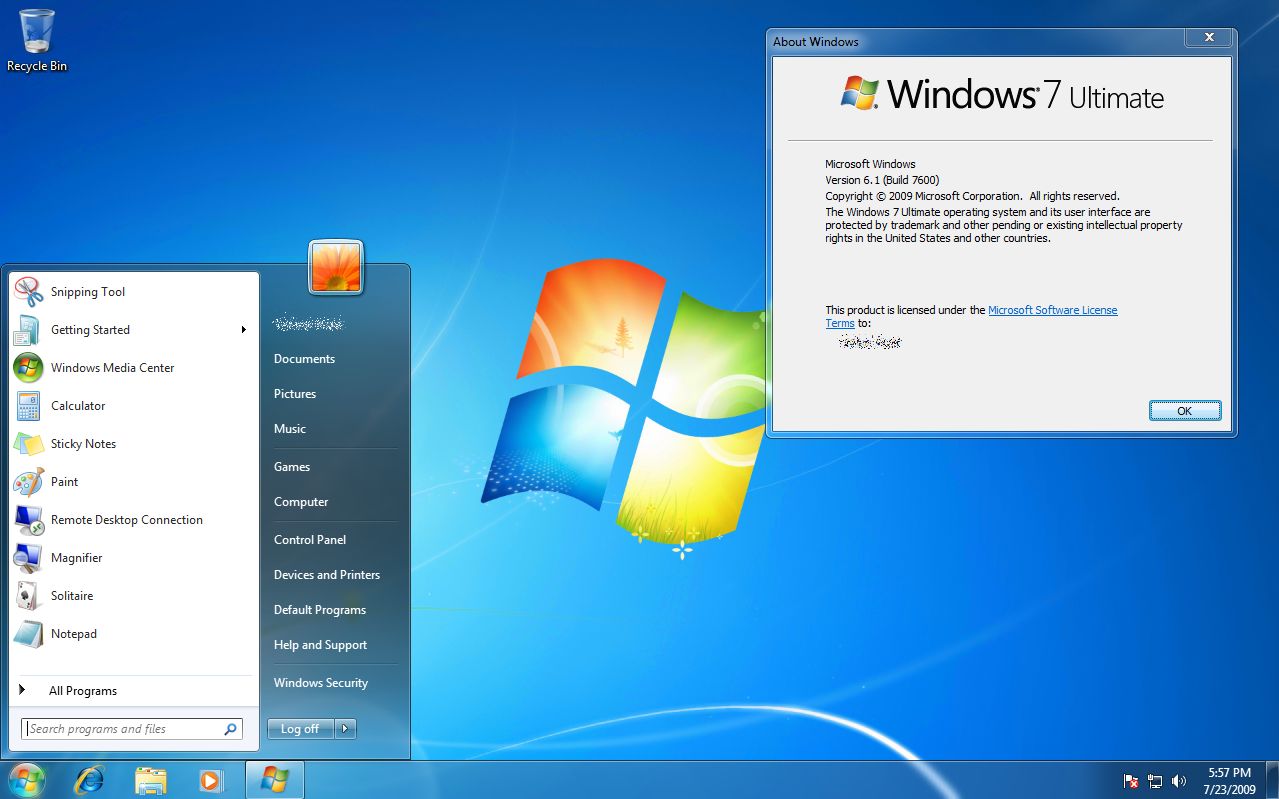The Turing Test defeated! Well, maybe.
Anyone who has been in my class (in fact I’m posting this because I received a few emails from you about this story) knows the acronym CAPTCHA; it stands for Completely Automated Public Turing Test to tell Computers and Humans Apart. It is also one of the main methods for ensuring that someone entering or registering for a website is actually a human. It looks like one of these guys:
 There are many variations on this, including picture CAPTCHAs, animated CAPTCHAs, I even found this dice-based CAPTCHA, which is my favorite one of all.
There are many variations on this, including picture CAPTCHAs, animated CAPTCHAs, I even found this dice-based CAPTCHA, which is my favorite one of all.
The big question that always comes up about a CAPTCHA isn’t the thing itself, but rather what is meant by “Turing Test?” At its most basic, the test asks whether a machine can have a text-based conversation with a human, and convince the human that they are having a conversation with another person. If the machine can do that, it has passed the Turing Test. It is named after the tragic yet pioneering scholar and mathematician Alan Turing who postulated the concept of thinking machines.
These Turing tests have been going on for decades – one of the first conversational programs was Eliza (a version of which you can interact with here), followed by many more – now we have things like Siri and Cortana, we had visions of this in movies all the way back in 1968 with the landmark film 2001: A Space Odyssey and more recently Her, with a myriad in-between in which the lines between machines and humans are being blurred. However, no one mistakes those constructs for a human. Remember, in the Turing Test, the human can’t see who they’re conversing with.
Now, however, there are news reports all over the place about a machine from the University of Reading, specifically a supercomputer masquerading as 13 year-old boy Eugene Goostman, finally passing the Turing Test. I believe it has already been passed many times, but this for some reason is more official. Don’t be fooled just yet, however, as there is a massive amount of debate as to whether or not the results are valid. The arguments are two-fold: First, is it really artificail intelligence? I believe this is a non-starter as the Turing Test isn’t meant to measure that in the first place, it’s a question beyond the scope of the test. The second argument I’ve heard, however, is more valid: Because the machine was masquerading as a 13 year-old boy and not an adult, it didn’t have to present the same level of “intelligence” that other systems attempt to convey, therefore making its task easier. I think that’s a valid point, and we’ll have to see how the debate plays out.
If you would like to give Eugene, that is the software that portends to be Eugene, a try, you can tinker with an earlier version of it here. Have creepy fun!
Are we on the cusp of real-time translation?
The article I’m about to link to covers so much that I talk about in class, including neural networks, deep learning, artificial intelligence, real-time speech parsing for things like Siri, corpus analysis (evaluating large collections of text) and so on that it boggles the mind.
There are already a myriad of tools to help you convert one language into another in almost real time, including apps for iPhone, Android, and Windows. Something like that is very useful if you are, say, traveling and don’t speak the local language.
Now, however, Microsoft is planning on releasing functionality in Skype that doesn’t simply translate text, but will translate spoken conversation from one language to another in real time.
This may not seem like a big deal, but it could be very useful for obvious reasons, for example company meetings comprising employees from different countries, or medical consultations with specialists from around the world, or having a classroom comprised of students from all over. Or, for more mundane reasons, if you simply had friends whose native language was different from your own.
Whatever the use, something like this would be a big step in further shrinking the world and removing a significant communication barrier that has always existed. The implications for this type of functionality are enormous.
The Internet in Real Time
We once discussed in class that we create as much information every two days as we did from the beginning of time until 2006. It’s a hard statistic to process, the numbers and amounts of information are so vast that trying to imagine it is all but impossible.
If you would like to see a small part of that information being created however, then you should head over to The Internet in Real Time. The header image for this post is a screenshot of the page, and each of those tiles is updating in real time as you watch along with a statistic of how many gigabytes of data has transferred over the Internet as you watched. The number may not look so big considering it’s the whole Internet, but remember that only 1000 gigabytes makes a terabyte, 1000 terabytes makes a petabyte, and 1000 of those makes an exobyte! When you think about it that way, that number is pretty big.
So click over, and be amazed!
It’s happening.
See those up there? Those are Bitcoins, a form of digital currency. That also means they’re not *real* Bitcoins since real Bitcoins are actually digital…you get the idea.
Anyway, now take a look at the picture below.
Notice anything…odd? I saw this yesterday on the door of a small cafe on Decatur and I had to take a picture. You’ll notice that under the list of credit cards they take, it shows they also take Bitcoin.
I predict we will see this much more often. Bitcoin is a digital currency earned through running algorithms on a PC known as mining. Solve the algorithm, earn some Bitcoin. It’s a gross over-simplification, but that’s essentially how it works. The hardware required to do this, in other words the computational cost, has been increasing as the algorithms have been becoming more complex, however the value of Bitcoins has been rising as well – last year a single Bitcoin was worth an all-time high of $1200. At the time of this posting, one Bitcoin is worth $533.
So disruptive has Bitcoin been, and so much has it become an economic force, that countries including Canada, the United States, and even Iran have suggested they will consider regulation, while others such as Jordan and Israel have warned against it, Germany will tax it as private money, England won’t, and Japan has no plans to address it at all. Whether or not that is because of the spectacular collapse of Japanese Bitcoin exchange Mt. Gox is unknown, but there is likely some influence there.
Thousands of places take bitcoin as payment, but not Amazon, which may be needed to truly make them mainstream.
There was also the very sad story about the poor guy who disposed of a hard drive containing around $9 million worth of Bitcoin in a landfill. That’s because he mined the coins when it was a new hobbyist thing done by computer geeks, and not the global juggernaut it is now, and didn’t realize their value.
As you can see, there is a lot going on with Bitcoin and while it is still the techie’s domain, I suspect that will change in somewhat, but not very, short order.
PC-camera spying software leads to arrests.
Ever wonder if people can watch you through your PC’s webcam? Well, if it makes you feel any better, they can! it has been going on for a while, in fact – for example, there was this story from 2010 about teachers and administrators watching students at home through their webcams for disciplinary purposes. Completely invalid, unacceptable disciplinary purposes that ended in a huge scandal, but they were still doing it.
More recently, last week in fact, the creators of Blackshades RAT, and many of its users, were arrested. Blackshades RAT (Remote Access Tool or Remote Administration Trojan, depending on who you talk to) is a trojan that infects a PC when the owner opens an attachment in an email which then installs the tool. Once that happens, it allows a remote user to see through the PC’s camera and record what it sees without the owner’s knowledge. It’s believed that around 500,000 machines were infected worldwide.
The raid on the creators and users was an international effort that took place in many countries and saw almost 100 people taken in to custody. It was brought to light when a hacker attempted to blackmail Miss Teen USA with images recorded using the trojan, but it backfired when she contacted law enforcement and went public.
It’s an interesting case, since the creators of software aren’t usually held responsible for what the users of that software do. In this case, though, since the software was sold for $40 through their site, was designed explicitly to carry out illegal acts, and even offered technical support through their website, there was more leeway in the prosecution. The outcome of the raid is unknown for now, but it will be interesting to see how it all works out.
A couple of additional points: The only anti-virus program I could find that confirmed the ability to remove this malware is Symantec’s Norton Antivirus, a product I am not a big fan of, as you all know. I believe most antivirus programs have the capability to remove this malware, but you’ll want to check to be sure. Also, sometimes people advise that you put black electrical tape over your webcam if not using it. I advise against that because it will gum up the front of the camera and prevent the laptop from closing, and if you don’t clean off the gum it can even damage the machine. You can hang something over it, cloth perhaps, use a binder clip, but electrical tape is a bad idea. But it is a good idea to cover it!
China charged with hacking U.S. companies
If you haven’t heard, the United States, for the first time ever, has filed charges against another government. Specifically, China. This was because the U.S. discovered that members of the Chinese military, who were part of an elite unit known as 61398, used what’s known as spearphishing, in which phishing emails are sent to a specific company to get information about that specific company, then once inside stole corporate secrets that allowed them to create new, cheaper products that then flooded the American market, from steel tubes to nuclear power plants. This is known as Industrial Espionage.
The result is lost jobs and closed companies, and the U.S. isn’t willing to let this go. Of course China denies it, even going so far as to issue a warning, but the evidence is clear. Even so, filing charges against another COUNTRY, as opposed to a foreign company or person, is untested ground.
Michael Jackson performs once more.
I’m not sure exactly why, but people are often surprised to find out I’m a fan of Michael Jackson. He was a great performer, great entertainer, great songwriter, and the entertainment world is worse of because of his loss.
However, during this year’s Billboard Music Awards (held right here in Las Vegas, by the way), we were able to see him perform one more time, through realistic light projection similar to the process that brought Tupac Shakur back to life at Coachella a couple of years ago.
This time, it was Michael Jackson that received the treatment. It combines live dancers with pre-recorded and holographic technology to bring the performer back to life. The technology involved is mainly projection technology, but its development and history, even its ownership, is murky and involves a bankrupt company that originally brought Tupac back to life, and the current owners of the technology actually sued to have MJ’s performance blocked!
The video of his posthumous performance is below. Pretty amazing stuff, and I’m very curious to see who gets the treatment next. I’m guessing Elvis.
Love Star Trek? Have $35,000,000? This house is for you!
Star Trek, originally run for three seasons from 1966-1969, predicted many of the technologies we have today. Communicators, space travel tech, medical technology, automatic doors, voice commands, big screens, portable computers, in fact it predicted so much that there was a TV show called How William Shatner Changed the World, which focused on the predictions the show made.
If that isn’t enough for you, if you need to live *in* the Star Trek universe and happen to be rich, really rich, supa-dupa rich, and don’t mind living in Florida, then do I have the house for you. A spectacular house that has been built up to represent everything Star Trek. Never mind the 16 bathrooms, full arcade, and bridge-movie-theater, it’s Star Trek!
Read the article and definitely take a look at the pictures over on Cnet. The full listing for the house is here.
It’s still looking bad
Although it’s not finalized, the FCC, chaired by former cable-company lobbyist Tom Wheeler, has allowed discussion to move forward on the idea of allowing ‘paid priority’ for companies on the Internet. In other words, ISPs such as Cox or Comcast can charge a company like Netflix for a guaranteed level of service.
This really annoys me, not just because it will completely rearrange the economy of the Internet and cause content-delivery companies (like Netflix) to pass the costs on to you making the whole experience more expensive while other companies friendly to the ISP won’t have to, but also because Tom Wheeler is blatantly lying to us. He is saying there will always be an open Internet and nothing will interfere with the end-users’ experience online, but it’s a bald-faced lie. He has toed that line for a long time, then this happens. It’s bizarre in how overt his deceit is. Usually when politicians lie, they couch it in terms that make it seem like they’re sort-of telling the truth, but Wheeler hasn’t even done that.
Want to see something really scary? This chart from the Huffington Post shows how much extra you might have to pay for various web services if this plan moves forward. Truly terrifying, and a dark day if this ever comes to fruition.
Again, nothing is finalized but it looks more and more likely that it will ultimately go through, even though many heavy-hitters including almost all large tech companies, many politicians, citizens, the only ones who *do* want this to happen are Tom Wheeler and the communication companies.
With this change looming, as well as control of the Internet infrastructure soon to be handed over to the U.N. (at the request of China and Russia, no less), the Internet will never be the same, in a bad way.
My newest find.
This is a Sony Video Walkman. We all remember the regular Sony Walkman, right? No? Sheesh, alright, Sony had the big electronics device of the ’80’s, the cassette-playing Walkman. The Walkman made it easy to take your music with you, something that was obviously not as easy to do as it is today. There was no such thing as a portable turntable (well, maybe there was, but it clearly had very limited use).
Anyway, I found this Video Walkman, which was intended to make portable video as easy as the Walkman made portable music, at a Goodwill and it is quite a find – a sort of portable VCR. It uses a standard 8mm tape, and in the days of analog TV broadcasts could pick those up as well. As you will see in the images, it has quite the array of controls in a small package; it can switch between TV and Tape, it has all controls for both, it can display the data of the tape or not, it can output video to a TV or take video input *from* a TV, it’s just an amazing device.
Sadly, you can tell from the white screen that the capacitors have gone bad, so it will need to have them replaced. That’s no small task. Even so, for $6 I’m really happy with it.
Have some more images!


























